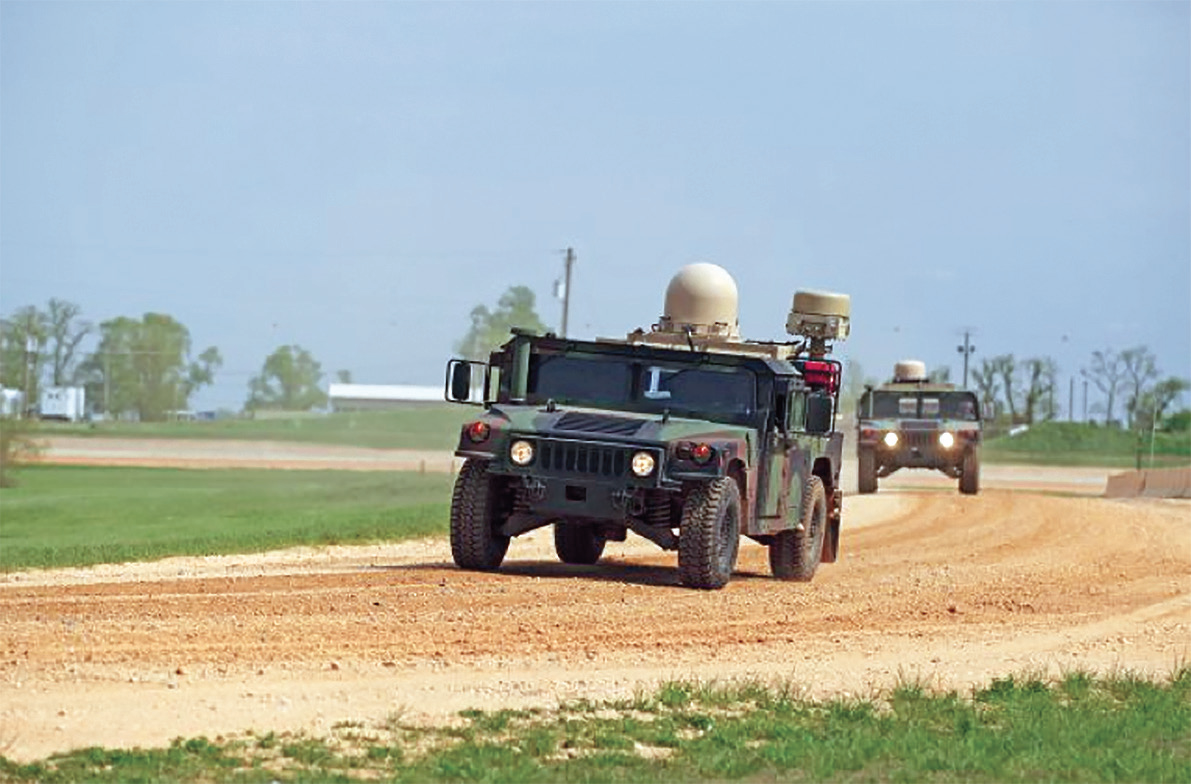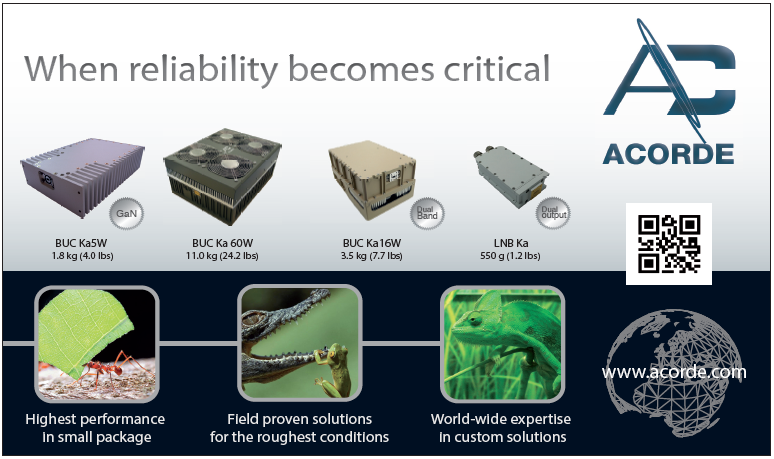The government and military of any country need instantly deployable, secure, high-speed communications networks that can deliver immediate access to mission-critical applications.

A WIN-T equipped vehicle moving across harsh terrain. Photo is courtesy of the U.S. Army.
Naval vessels scattered across the seas and aircraft roaming the skies need reliable ship-to-shore and air-to-land communications as well as secure ground-based communications. Ground troops require vital communications for missions such as supply logistics; intelligence, surveillance and reconnaissance (ISR); battlefield communications; airborne communications; disaster site video; and emergency management planning. Life-saving and situational awareness information is needed at a moment’s notice.
Today, satellite IP communications represent a powerful solution to deliver high-speed, two-way IP connectivity in any environment as SATCOM overcomes distance and environmental challenges through an integrated network.
Advances in communications-on the move (COTM) technology allow soldiers to deploy wireless broadband networks on moving ground vehicles, deep water fleets, military aircrafts and unmanned aerial vehicles (UAVs). COTM equipment has been engineered to withstand harsh environments, and technology advances allow SATCOM signals to match terrestrial broadband speeds.
With a dynamic COTM solution, a vehicle in the field becomes broadband-enabled and capable of supporting Internet, voice, video and data services. Satellite routers can fit in the rear of a vehicle, a low-profile antenna can install on top of the vehicle, and SATCOM users inside the vehicle benefit from wireless connectivity on laptop computers
and voice-over-IP phones.
COTM meets the most demanding mobility and security requirements for soldiers, marine vessels and aircraft, enabling real-time secure and reliable video, data and voice transmission while in transit. COTM is the key to the always-on, instant communications for military and government operations, delivering all the capabilities of the next-generation IP network. COTM provides instant situational awareness, eliminates the setup and align procedures for reach-back satellite communications and doesn’t require expert technicians on site for setup and operation.
In the airborne environment, the same COTM technology used in ground vehicles is applied for ISR missions, as well as for voice, video and data transmissions. High-tech planes are equipped with auto-tracking antennas and with state-of-the-art infrared cameras that provide full-motion video feeds over a secure satellite communications backbone. High-bandwidth technology is integrated into an aircraft so that the modem, antenna and the aircraft all work together.
This integrated solution substantially increases data rates and accommodates the rapid Doppler Effect that occurs during flight. This allows the antenna to react more quickly to aircraft movement and integrate into many of the ISR systems being used today. The Doppler Effect refers to the apparent satellite frequency shifts due to high speeds, turbulence and rapid altitude changes that create problems receiving satellite signals. Additionally, the high-bandwidth technology is able to accommodate hundreds of aircraft in one network and track their movement dynamically, if required.

WIN-T equipped vehicles supporting comms testing for COTM. Photo is courtesy of the US Army.
Today’s manportable terminals are ideal for communications on the pause (COTP) applications. Today’s military requires SATCOM equipment which is smaller, lighter, draws less power, is easier to set up and yet delivers higher bandwidth than ever before.
Missions today often require rapid deployment and manportability of high-bandwidth satellite terminals. Due this need, many next-generation terminals are incorporating flat panel antennas. However, most satellite bands, notable
Ku-band, require spread spectrum technology to alleviate the problem of adjacent satellite interference that can be encountered when using a sub 1 meter or flat panel antenna. Therefore, satellite modems designed for manportable and sensor applications must support this demanding and power-hungry feature.
Manportable boards also are decreasing in size, weight and power, or SWAP, bringing more mobility to the warfighter. The increasingly portable communications technology that can support Internet, voice, video and data SATCOM will be even easier to carry and deploy for anywhere and anytime communications.

A Northrop Grumman RQ-4, which carries the Battlefield Airborne Communications Node payload for COTM during flight ops.
Half the size of existing boards and comparable to the size of an iPad, these next-generation, energy-efficient satellite router boards build off existing transmit key line capabilities that already improve battery performance by as much as 40 percent. The next-generation boards, in addition to transmit key line, are utilizing systems that include a processor on the FPGA architecture, further reducing the total power consumption requirements.
This is where the Department of Defense (DoD) is moving—satellite communications technologies which are smarter and able to support more agile missions, with the flexibility to deploy tailored topologies and configurations to support a host of applications, ranging from Voice over IP to file transfer.
The newest manportables will be small, lightweight and power-efficient, bringing innovation to portable communications technology, designed to support data, voice and video connectivity in highly mobile military applications. The remotes will feature high-speed data transmission, increased bandwidth capacity and higher network availability, aiding the mobile warfighter in forward-deployed locations.
Additionally, the remotes will be easier to integrate into portable solutions such as COTM applications, and they will feature quality-of-service (QoS) prioritization, Wideband Global Satellite certification, Time Division Multiple Access (TDMA), transmission security and FIPS 140-2 Level 3 certification, among other features. The units also will be energy-efficient and bandwidth-efficient. The software ensures the BUC is turned off when the unit is not transmitting in TDMA.
COTM advances will be achieved with the most bandwidth-efficient, scalable and highly secure SATCOM platform. Hubs, routers and network management software will be designed to address the growing complexity of deploying and managing global IP networks.

These advances will enable the military to communicate, share information and provide support for large mobile groups. From global logistics and disaster recovery to mobile communications, advanced satellite networks, SATCOM software and associated products will play a critical role in government and defense communications.
The military has an insatiable appetite for COTM, and this desire is continuing as the DoD looks to modernize our forces on land, at sea and in the air.
Karl Fuchs serves as Vice President of Technology for iDirect Government and he is also a Senior Contributor to MilsatMagazine. He may be contacted at kfuchs@idirectgov.com.



